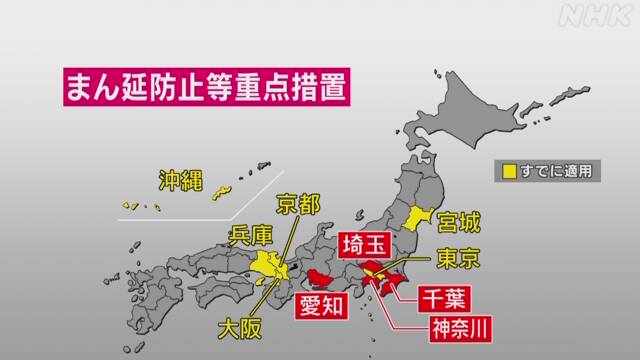On the night of the 20th, which was the first night when "priority measures such as spread prevention" were applied to the four prefectures of Kanagawa, Chiba, Saitama, and Aichi, we analyzed the number of people in downtown areas based on big data, and found that there were four. In the prefecture, both decreased from last Tuesday.
On the other hand, it was found that all six prefectures, such as Tokyo and Osaka, which have already been applied, increased from last week.
NHK will use big data collected by NTT DoCoMo from mobile phone base stations in a form that protects privacy, and will use big data in the area where "priority measures such as spread prevention" are applied at 9 pm on the 20th. I analyzed the number of people.
Of the four prefectures where priority measures began on the 20th, the area near Sakae in Nagoya City decreased by 12% from the average of last Tuesday and Tuesday of the last month.
In addition, the area near Omiya Station in Saitama City decreased by 6% compared to last Tuesday and 1% compared to the average on Tuesday last month, and the area near Funabashi Station in Chiba Prefecture decreased by 3% compared to last week. However, there was almost no change compared to last month.
And the area around Yokohama Station decreased by 4% compared to last week, but increased by 2% compared to last month.
On the other hand, the number of people in all six prefectures to which the priority measures have already been applied increased from last week.
Of these, in Tokyo, the area near Shibuya station increased by 10% compared to last Tuesday and 11% compared to the average of last Tuesday, and the area near Shinjuku Kabukicho increased by 2% from both last week and last month.
In addition, the areas near Kokubuncho in Sendai, Shijo Kawaramachi in Kyoto, Shinsaibashi in Osaka, Sannomiya in Kobe, and Kokusaidori in Naha are 11% to 24% of the average on Tuesday last month. It decreased by%, but increased by 1% to 3% compared to last Tuesday.
In many areas, the number of people decreased once after the priority measures were applied, but then gradually increased.

